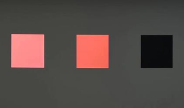
Hue linearity is critically important to uniform color spaces and color appearance models. Past studies investigating hue linearity only covered relatively small color gamuts, which was generally acceptable for conventional display technologies. The recent development of HDR and WCG display technologies has motivated the development of new color spaces (e.g., IC<sub>T</sub>C<sub>P</sub> and J<sub>z</sub>a<sub>z</sub>b<sub>z</sub>). The hue linearity of these new color spaces, however, was not verified for the claimed HDR and WCG conditions, due to the lack of constant hue loci data. In this study, an experiment setup was carefully developed to produce HDR and WCG conditions, with the stimulus luminance of 3400 cd/m² and the diffuse white luminance of 1000 cd/m² and the stimulus chromaticities almost covering the Rec. 2020 gamut. The human observers performed a hue matching task, adjusting the hue of the test stimulus, with a hue angle step of 0.2°, at various chroma levels to match that of the reference stimulus at 21 different hues. The derived constant hue loci were used to test the various UCSs and suggested the need to improve the hue linearity of these spaces.
Hongbing Wang, Minchen Wei, Xinchao Qu, "Constant Hue Loci in Rec. 2020 Gamut under an HDR Condition" in Color and Imaging Conference, 2022, pp 81 - 84, https://doi.org/10.2352/CIC.2022.30.1.16
 Find this author on Google Scholar
Find this author on Google Scholar Find this author on PubMed
Find this author on PubMed